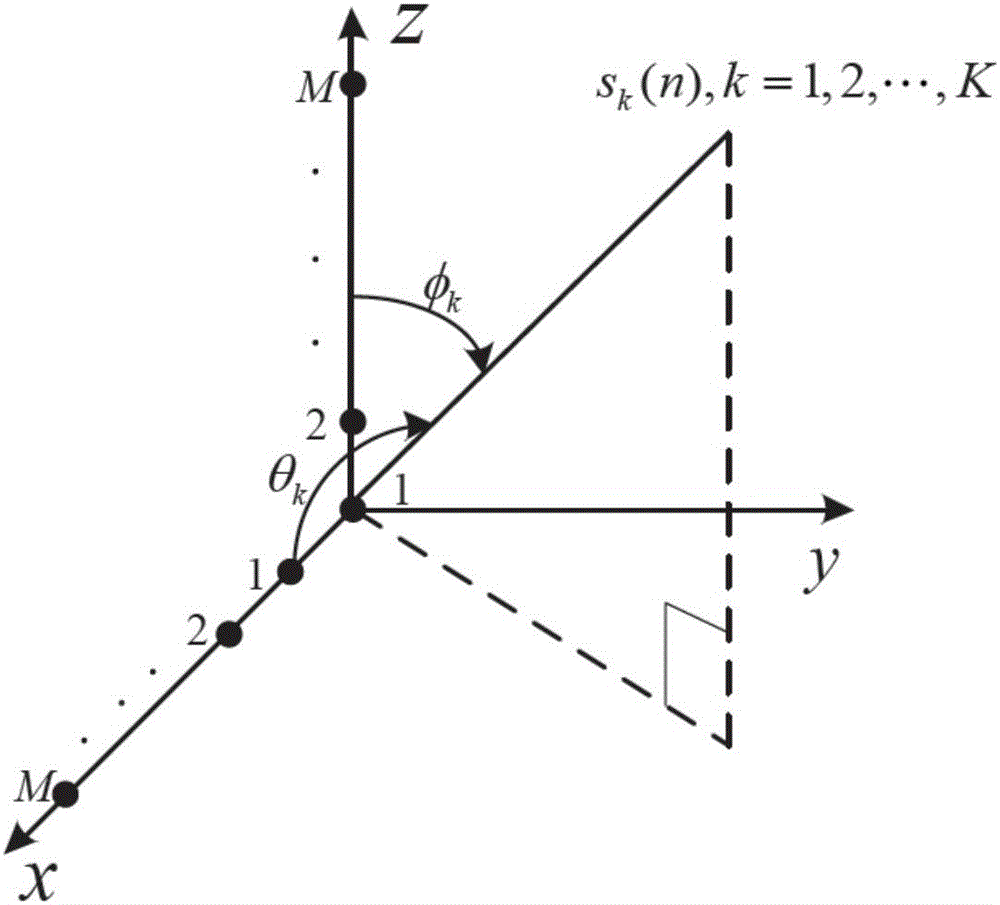Estimation algorithm for two-dimensional direction of arrival (DOA) of L-shaped array by adopting time-frequency analysis
A technology of time-frequency analysis and direction estimation, applied to direction finders using radio waves, radio wave direction/deviation determination systems, etc., can solve problems such as the lack of a two-dimensional DOA estimation algorithm and poor results
- Summary
- Abstract
- Description
- Claims
- Application Information
AI Technical Summary
Problems solved by technology
Method used
Image
Examples
Embodiment Construction
[0058] The technical solutions and effects of the present invention will be further described in detail below with reference to the accompanying drawings.
[0059] refer to figure 1 , the implementation steps of the present invention are as follows:
[0060] Step 1: Use two uniform linear arrays to form an L-shaped array on the xz plane.
[0061] In the x and z directions, array elements are placed at the same interval d, and there are M array elements in each direction, and the original array element is specified in the z direction. Two uniform linear arrays are arranged orthogonally to form an L-shaped array on the xz plane. Suppose there are K frequencies aliasing far-field signals (N represents the number of snapshot samples) by azimuth angle θ k and elevation angle φ k It is incident on this array, and the signal is added with complex Gaussian white noise with a mean value of 0 during the propagation process;
[0062] Step 2: Sampling the uniform linear array recei...
PUM
 Login to View More
Login to View More Abstract
Description
Claims
Application Information
 Login to View More
Login to View More - Generate Ideas
- Intellectual Property
- Life Sciences
- Materials
- Tech Scout
- Unparalleled Data Quality
- Higher Quality Content
- 60% Fewer Hallucinations
Browse by: Latest US Patents, China's latest patents, Technical Efficacy Thesaurus, Application Domain, Technology Topic, Popular Technical Reports.
© 2025 PatSnap. All rights reserved.Legal|Privacy policy|Modern Slavery Act Transparency Statement|Sitemap|About US| Contact US: help@patsnap.com



